Exploring the city
The name Singapore is derived from the local name Singapura which means Lion City in the Sanskrit language and was, according to legend, thus named by Sri Tri Buana while on a hunting trip in the area in the 13th century.
The city of Singapore sits at the eastern end of the Straits of Malacca which in colonial times was part of the trade route from Europe to China. It was this positioning along the valuable trade route that prompted Sir Thomas Stamford Raffles to negotaite a treaty with the local Singapores in 1819 which led to the establishment of the British Colony of Singapore that same year.
Singapore was occupied by the Japanese during WWII and the fall of Singapore in 1942 was seen by the British as one of the great defeats of the war and resulted in the capture by the Japanese of 80,000 British, Indian and Australian troops. After the war and with the decline of the British Empire Singapore like many European Colonies gained its independence, August 9th 1965.
In the nearly 50 years since independence Signapore has become well known for its modernization and emergence as a major regional trading hub. The emergence of the new country was led by Lee Kwan Yew as Prime Minister for 25 years, and then as mentor and advisor to subsequent leaders until his death in 2013. He is widely recognized as the father of modern Singapore.
There ends the history lesson, so lets turn to what we saw and discovered on our first day exploring the city.
Stepping outside our hotel's front entrance the first impressions of Singapore are varied:
hot and humid, lush parks and gardens, tall trees and flowering plants seemingly everywhere
highrise in every direction whether it is tall modern apartment buildings or densly packed tall commercial buildings in the old and new business center,
wealthy, lots of newish expensive cars (and more on this later), electronic toll systems, clean modern metro system, clean bright shopping malls with lots of up market shops,
and of course clean streets.
As the day progressed we found a few odd things about Singapore and its people for example coloured bread and ice cream sandwich. This is exactly what it sounds like a slice of bread with swirling colors baked in, wrapped around an ice cream bar. Very weird.
We met the Merlion. A mythical creature that is a Lion crossed with a Fish (or maybe mermaid). A 75 ton statue of this creature once stood at the entrance to the Singapore River but has been transported to a new home on Marina Reservoir which is fed by the River.
Along Waterloo St we found houses of worship for Hindu, Buddists and Christians reflecting the diversity of Singapores' population as well as the strength of the populations religious commitment.
On a vist to China Town we were told the story of Singapores' building women who are considered to have been instrumental in the original construction of the city. Their role was to carry the materials needed by the building craftsmen from the ground up onto the scaffolding on which the craftsmen worked. They carried the materials in two buckets suspended form a plank across their shoulders.
After China town we made a short visit to Little India (the actual name of a metro stop) which as its name suggests is an Indian flavoured part of the city. The smell of Indian spices is immediately apparent on leaving the subway station and on the off chance that ones nose is not working the stark difference in the style of buildings would alert one to the Indian nature of the area.
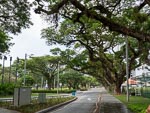
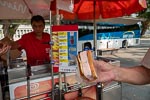

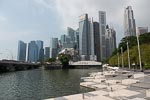
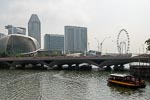
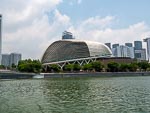
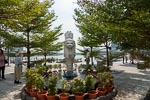

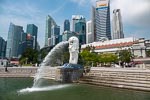
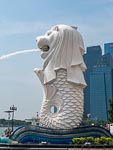
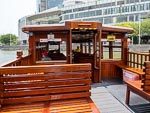
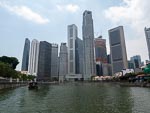
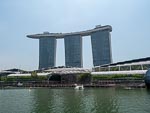
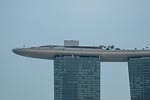
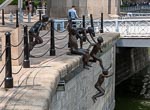
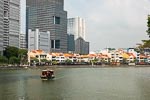
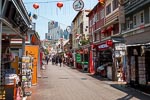
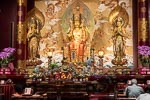
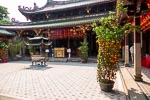
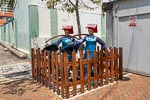
Probably the most noticeable feature of the day were the three tower buildings of the Marina Bay Sands Resort with the boat like structure bridging the tops of the three towers togethr with the nearby ArtScience Museum building that looks like a stylaized hand palm up.
A note on car prices. In order to buy a car or indeed any motor vehicle in Singapore one need to obtain a Certificate of Entitlement for the type of vehicle. These were described to us as a "car's birth certificate". These are good for 10 years. The price is set by auction and as far as I could work out the price of one of these "certifictes" for a small Japanese or Korean car is about $40,000. In the street today I saw someone driving a McLaren 720S (I think). Later I googled this vehicle and found that I could buy one in Singapore for S$990,000 without cirtificate of entitlement (without COE). The local McLaren dealer had half a dozen such vehicles for sale.